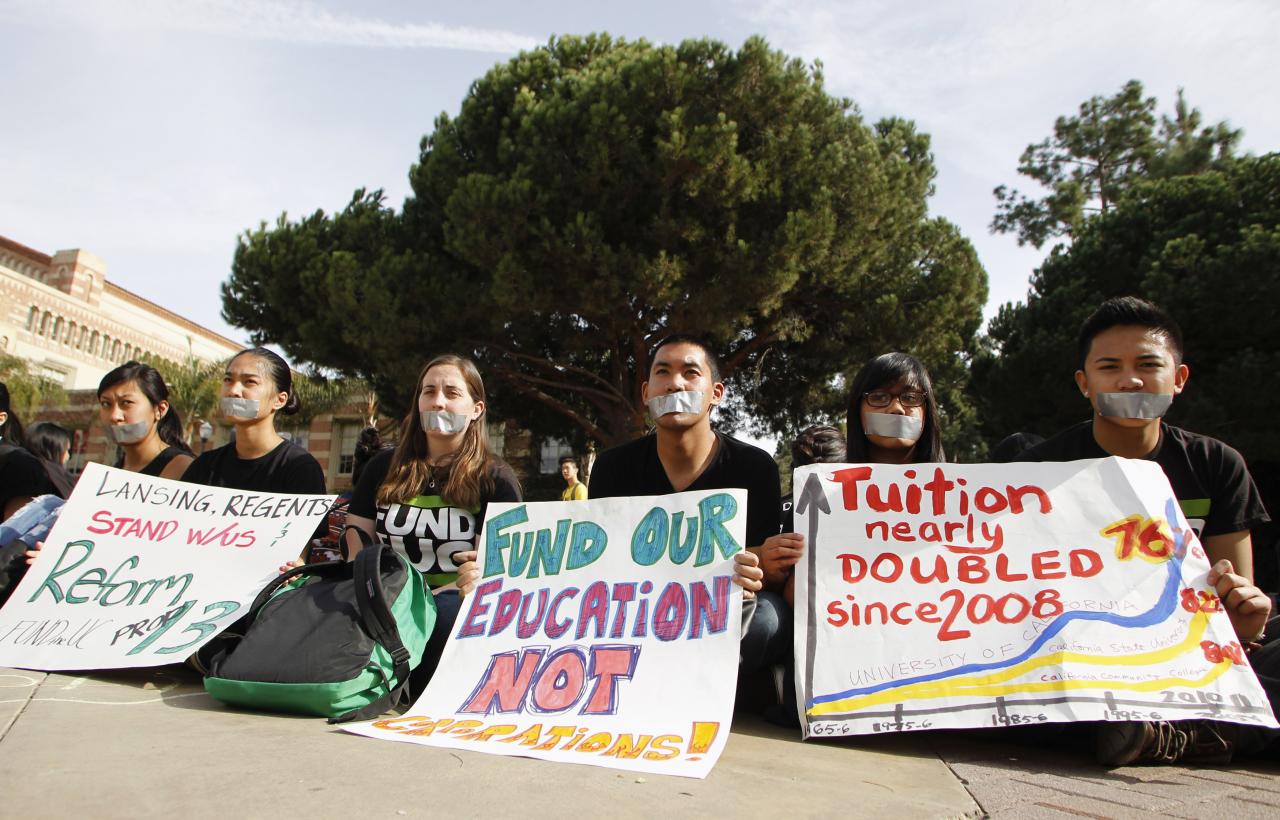Students Protest Tuition Fee Increases has become a rallying cry across campuses as students voice their frustrations over rising educational costs. The financial burden of tuition fees has ignited unrest, leading to widespread demonstrations that underscore the significance of affordable education. As students unite in their demands for change, the issue highlights the broader implications for educational accessibility and equity.
This movement reflects not just a struggle against increased fees but also a deeper concern regarding the future of higher education and its role in society. With education being a fundamental right, students are challenging institutions to prioritize their needs and advocate for policies that support their academic pursuits.
In today’s fast-paced world, the significance of effective communication cannot be overstated. Whether it’s in a personal or professional context, the ability to express oneself clearly and concisely is a skill that can significantly influence outcomes. In this article, we’ll delve into the nuances of effective communication, explore its various forms, and provide practical tips to enhance your communication skills.
The essence of communication lies in the transfer of information from one individual to another. This process can take various forms, including verbal, non-verbal, and written communication. Each of these modes has its own set of rules and nuances that can impact how the message is received and interpreted. Verbal CommunicationVerbal communication encompasses any spoken words used to convey information. This includes face-to-face conversations, phone calls, and even video conferences.
The tone, pitch, and pace of your speech can significantly affect the message’s reception. It’s not just about the words you choose; how you say them is equally important. To enhance your verbal communication skills, consider the following tips:
1. Be Clear and Concise
Avoid jargon and complex language that can confuse your audience. Stick to simple, straightforward language that everyone can understand.
2. Listen Actively
Effective communication is a two-way street. Listen to the other person’s perspective and respond accordingly. This shows respect and fosters a more productive dialogue.
3. Use Appropriate Body Language
Non-verbal cues, such as eye contact and facial expressions, play a crucial role in how your message is received. Ensure that your body language aligns with your words to avoid mixed signals. Non-Verbal CommunicationNon-verbal communication refers to the transmission of messages without the use of words. This includes body language, gestures, facial expressions, and even the physical distance between individuals during a conversation.
Research suggests that a significant percentage of communication is non-verbal, making it essential to be aware of how your body language can either support or contradict your spoken words.To improve your non-verbal communication, keep these points in mind:
1. Be Aware of Your Gestures
Simple gestures can convey a wide range of emotions. Be mindful of the messages your body language sends.
2. Facial Expressions Matter
Your face can express various emotions, often more eloquently than words. Ensure your facial expressions match the context of the conversation.
3. Personal Space is Key
Different cultures have different norms regarding personal space. Be aware of these differences to avoid discomfort or misunderstandings. Written CommunicationWritten communication is another critical aspect of effective communication. This includes emails, reports, texts, and any other written documents. The clarity and tone of your writing can significantly impact how your message is perceived.Here are some tips to enhance your written communication:
1. Know Your Audience
Tailor your writing style to suit the audience you are addressing. Formal language may be appropriate for a business report, while a more casual tone may be suitable for a friendly email.
2. Proofread Your Work
Spelling and grammatical errors can undermine your credibility. Always proofread your writing before sending it out.
3. Be Clear and Direct
Just like verbal communication, clarity is essential. Avoid long-winded explanations and get to the point quickly. The Importance of FeedbackFeedback is an integral part of effective communication. It allows individuals to understand how their message was received and whether it achieved its intended purpose. Encouraging feedback can help improve future communications and foster a culture of openness.To give and receive feedback effectively:
1. Be Constructive
When giving feedback, focus on specific behaviors rather than personal attributes. This makes it easier for the recipient to understand and accept.
2. Ask for Clarification
If you’re unsure about a message, don’t hesitate to ask for clarification. This demonstrates your interest and willingness to understand.
3. Practice Active Listening
When receiving feedback, listen carefully without becoming defensive. This will help you gain valuable insights. Cultural Considerations in CommunicationIn our increasingly globalized world, understanding cultural differences in communication has become essential. Different cultures have unique communication styles, which can lead to misunderstandings if not acknowledged. For instance, some cultures may value directness, while others may prioritize indirect communication.To navigate cultural differences effectively:
1. Educate Yourself
Take the time to learn about the communication styles of different cultures. This knowledge can enhance your interactions and prevent potential misunderstandings.
2. Be Open-Minded
Approach conversations with an open mind, recognizing that people may have different perspectives shaped by their cultural backgrounds.
3. Adapt Your Style
Be willing to adjust your communication style based on the cultural context. This demonstrates respect and can lead to more productive interactions. The Role of Technology in CommunicationTechnology has profoundly transformed the way we communicate. While it has made communication more accessible and instantaneous, it has also introduced new challenges. Misinterpretations can easily occur in written communication due to the absence of vocal tone and body language.To navigate the challenges of technology in communication:
1. Choose the Right Medium
Consider the nature of your message when deciding whether to use email, text, or a phone call. Some conversations are better suited for face-to-face interactions.
2. Be Mindful of Tone
In written communication, the absence of vocal tone can lead to misunderstandings. Use emojis or exclamation points judiciously to convey your tone clearly.
3. Limit Distractions
When communicating digitally, minimize distractions to ensure you are fully engaged in the conversation. Building Confidence in CommunicationConfidence plays a crucial role in effective communication. When you communicate with confidence, you are more likely to be taken seriously and respected by others. Building this confidence takes time and practice.Here are some ways to boost your communication confidence:
1. Practice Regularly
The more you practice, the more comfortable you’ll become. Engage in conversations, give presentations, or participate in public speaking events to build your skills.
2. Prepare Thoroughly
Whether you’re giving a presentation or having a crucial conversation, preparation is key. Knowing your material inside out will help you feel more at ease.
3. Focus on Your Strengths
Identify your strengths as a communicator and leverage them to your advantage. This will help you project confidence in your interactions. ConclusionIn conclusion, effective communication is a multifaceted skill that can significantly impact your personal and professional life. By understanding the different forms of communication, enhancing your verbal, non-verbal, and written skills, and being mindful of cultural differences, you can improve your ability to convey messages effectively.
Remember that communication is not just about speaking but also about listening and engaging with others. By incorporating the tips Artikeld in this article, you can become a more effective communicator and foster meaningful connections in your interactions.
FAQ: Students Protest Tuition Fee Increases
What are the main reasons for the protests?
The protests are primarily driven by the escalating costs of tuition, which many students find unaffordable, coupled with concerns about the quality of education and access to financial aid.
How have schools responded to the protests?
Schools have generally expressed a willingness to engage in dialogue with students, with some institutions reviewing their tuition policies and financial aid offerings.
What impact do these protests have on policy?

These protests can lead to significant changes in policy as they draw public attention, encouraging lawmakers and educational institutions to reconsider tuition structures and funding mechanisms.
Are other countries experiencing similar protests?
Yes, many countries are witnessing similar movements as students globally advocate for affordable education amidst rising tuition costs.
How can students effectively organize these protests?
Effective organization involves clear communication, establishing goals, collaborating with student groups, and engaging with faculty and administration to maximize impact.






